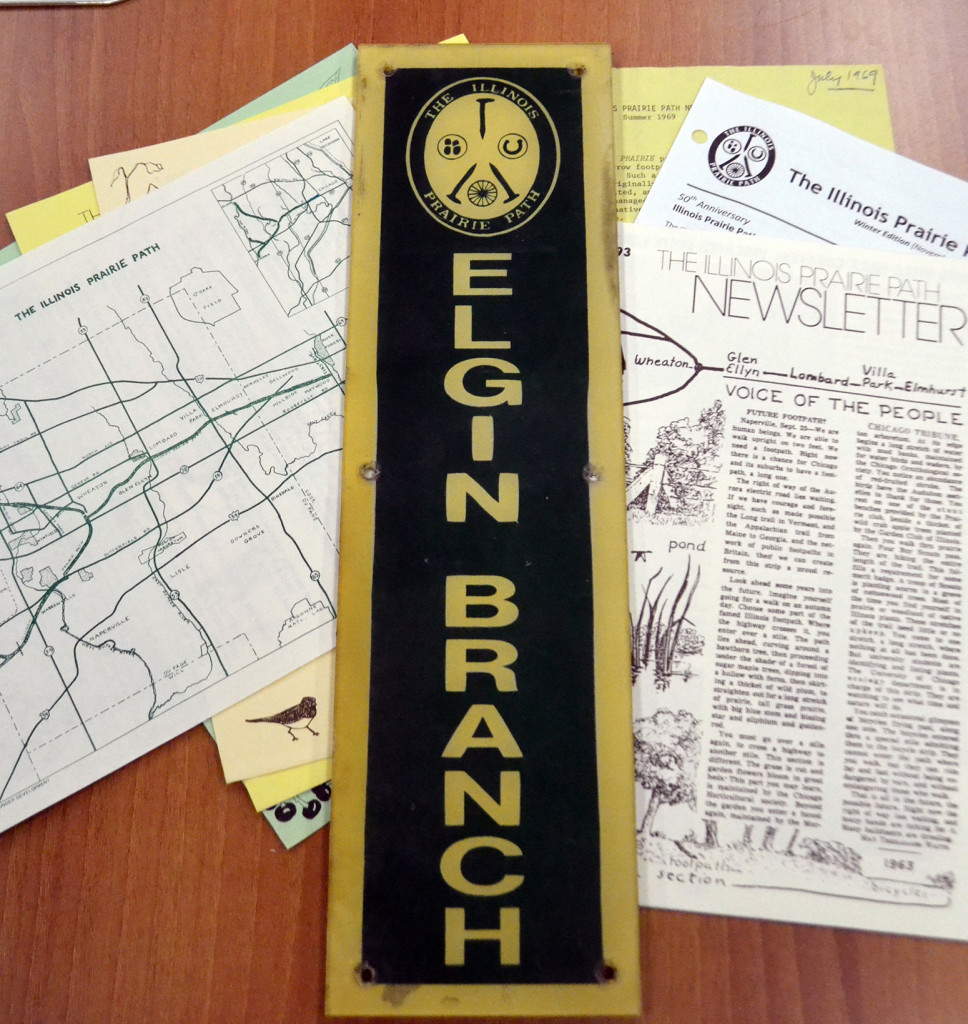Assistant Sports Editor
North Central College is the new home of stories, photographs, illustrations and other materials that chronicle the 50-year history of the Illinois Prairie Path.
The College in early February accepted delivery of the Prairie Path archives, which had previously been stored in an archive work space in downtown Wheaton. The Prairie Path’s board voted in early January to donate the collection of legal documents, artwork and other historical materials to the College, which plans to hold an open house on a future date to be announced.
 “I truly believe that making North Central College the home of the Prairie Path’s permanent records will highly benefit both organizations,” says Mary Jo Malach, Prairie Path board secretary. “The story of activists making change happen, especially in a physical manifestation that the public uses daily, is a story that cannot be told too often or in too many ways.”
“I truly believe that making North Central College the home of the Prairie Path’s permanent records will highly benefit both organizations,” says Mary Jo Malach, Prairie Path board secretary. “The story of activists making change happen, especially in a physical manifestation that the public uses daily, is a story that cannot be told too often or in too many ways.”
One reason Prairie Path leaders chose North Central as the new home for its historic materials is the Suburban Studies Archives within the College’s archives.
“This collection documents the physical, economic and political transformation of the western suburban region from 1945,” Malach says. “The Prairie Path data will be a part of this collection.”
Materials in the College’s Suburban Studies Collection include the Mary Lou Cowlishaw Papers (Illinois state representative 1983-2000), the archives of the American Association of University Women Naperville chapter and the archives of the League of Women Voters-Naperville. North Central College’s Archives also maintain the Harris W. Fawell Congressional Papers (U.S. representative 1985-1998).
Kimberly Butler, the College’s archivist, maintains materials in all of the collections.
“We will immediately rehouse the Prairie Path records, preserving them for future generations,” Butler said. “Archives staff will also organize and create descriptions of the records, which will make them accessible for researchers.”
The Prairie Path archives feature an extensive variety of items about the organization’s history, including artwork, maps, letters and writing from renowned naturalist May Theilgaard Watts.
A Naperville resident, Watts spearheaded the concept of a regional trail and organized a dedicated group of volunteers that cleared land, built bridges and expanded the path from 1966 to 1986. Despite frequent issues with vandalism, lawsuits and licensing—including a bridge over the East Branch of the DuPage River that had to be replaced six times—the path was successfully built.
Among those hailed as founders of the Illinois Prairie Path is the late Warren Keck of Naperville, who taught biology at North Central College from 1947 to 1969. Keck attended the first meeting of Prairie Path organizers at Watts’ home, hosted many of the group’s early board meetings at the College’s Student Union and led many field trips on the Illinois Prairie Path.
The Illinois Prairie Path is the first successful volunteer rails-to-trails conversion in North America and helped catapult a railroad conversion movement across the globe. Approximately 61 miles in length, the Illinois Prairie Path consists of three branches that begin near downtown Wheaton and stretch across DuPage County, eventually reaching Kane County and Cook County. Much of the crushed limestone trail was formerly part of the Chicago railway system. The archives record this transformation and preserve the stories of community members who built it: families, neighbors, organizations, businesses, schools and scout troops—all volunteers. The Path is maintained by public and private partnerships between DuPage County and other organizations.
“The history of the Illinois Prairie Path proves that the public and private sectors can work together,” Butler says.
The Illinois Prairie Path’s archives at North Central include a film strip that was used by Watts during presentations, an important relic of the Path’s creation that converted community members into active volunteers, including some who have volunteered for the Prairie Path since the 1960s. The strip, which was displayed more than 400 times, includes pictures of the emerging path and the volunteers building it, images that Watts showed to anyone willing to watch. Watts used the film strip to rally support for the Prairie Path, recruit volunteers and sway public opinion in favor of the project.
“It’s a historic piece of marketing that changed everything,” Malach says. “Watts, alongside many other leaders, took a really cynical public and changed it.”
Butler says that historical materials in the Illinois Prairie Path’s archives at North Central—such as Watts’ film strip—can be useful for many of the College’s programs. The environmental studies minor focuses on understanding and finding solutions to the relationships of economic, political, scientific and social forces of environmental challenges. Focusing on the entire Chicago region, the urban and suburban studies minor seeks to understand issues of transportation, housing, employment, sprawl and education from an urban and suburban perspective—topics closely related to the Illinois Prairie Path.
“The tie-in with our environmental and sustainability programs will be huge for the college and will help this material get used,” says Butler. “It’s a natural fit with our curriculum.”
Malach adds, “I envision that faculty and their students could look to the Prairie Path as a model of citizen activism, interagency/governmental cooperation, and generally as a model for effecting change.”

